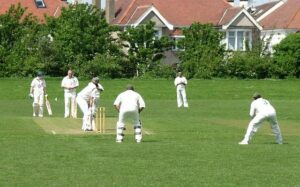As unique as it is beautiful, there’s a reason why Kentucky Bluegrass is one of the most popular turfs in the US. With its dense coverage, soft feel and stunning greenish-blue hue, it makes for a true statement piece wherever it might be sown.
Confusingly for a grass named after a hot and humid US state, Kentucky Bluegrass is actually best suited to cooler climates. It’s a cool-season grass, and can be challenged in areas that experience extended periods of heat, or that are prone to drought. For this reason Kentucky Bluegrass should only be a serious consideration for those in the more temperate areas of Australia, particularly Victoria and Tasmania.
So which uses and applications suit this grass best? Here are five of the best.
1) Residential Lawns
As a residential lawn Kentucky Bluegrass is almost unbeatable in cooler climates. A combination of good looking, comfortable and traffic tolerant will mean that whether you use your lawn purely for decoration or for fun, Kentucky Bluegrass will perform admirably. The traffic tolerance is thanks to the fact that the grass is a spreader, using rhizomes to expand over an area. These same rhizomes aid the grass in fixing itself when damaged. And that means you can play cricket, footy and chasey to your heart’s content!
2) Commercial Landscapes
Kentucky Bluegrass’s lure as a commercial landscape turf is obvious – it brings a fantastically unique look to the table which is sure to have your property’s landscape turning heads. This distinctive colour offers landscape architects a totally different base from which to work, allowing them to let their creative juices flow. If you’re looking for a commercial landscape turf unlike any other, look no further than Kentucky Bluegrass.
3) Public Parks
Kentucky Bluegrass is also excellently suited for use in public parks. The ability to spread via rhizomes is a rarity in a cool season grass (a feature more often found in warm season grasses such as Couch and Kikuyu), so any worn or bare patches can be expected to grow over in time, provided there isn’t another underlying issue. The ability to repair itself combined with the fact that the blades are most comfortable grown long (8-12cm) means far less mowing and patch-up work for park ground staff (although mowing will need to be regular in the grass’s peak growing period of spring).
Kentucky Bluegrass is also extremely shade tolerant, so the grass that lies beneath the park’s trees should be just as healthy as that which enjoys full sun. It should be said that it does require regular irrigation if sown in a region prone to dry spells, so this will need to be taken into account if the park doesn’t have an inbuilt irrigation system and covers a large area.
4) Playgrounds
The aforementioned softness of Kentucky Bluegrass will mean that the bumps and falls of the playground will be absorbed stoically by this hardy turf. Once again we’ve got the underground rhizomes to thank, giving the turf’s roots and base a soft, spongy texture. The boat-shaped blades are also soft to the touch, resulting in less itch for the kiddies. Once again, the shade tolerance will result in the grass offering strong growth under the entire playground.
5) Display Turf
The reason why Kentucky Bluegrass makes for an excellent display turf is obvious as soon as you look at it. It is a gorgeous grass, and is the perfect choice for any area which puts aesthetics at a premium. While Kentucky Bluegrass will need a complete lawn maintenance routine to look its absolute best (including irrigation, fertilisation, mowing and reseeding), the smaller nature of most display turfs will mean that such a regime won’t eat into your schedule too much.
In short, Kentucky Bluegrass is the perfect option for any space that puts a premium on looks, feel and hardiness. If you’ve got any further queries relating to whether Kentucky Bluegrass is the turf for you, don’t hesitate to contact the friendly team at McKays.



